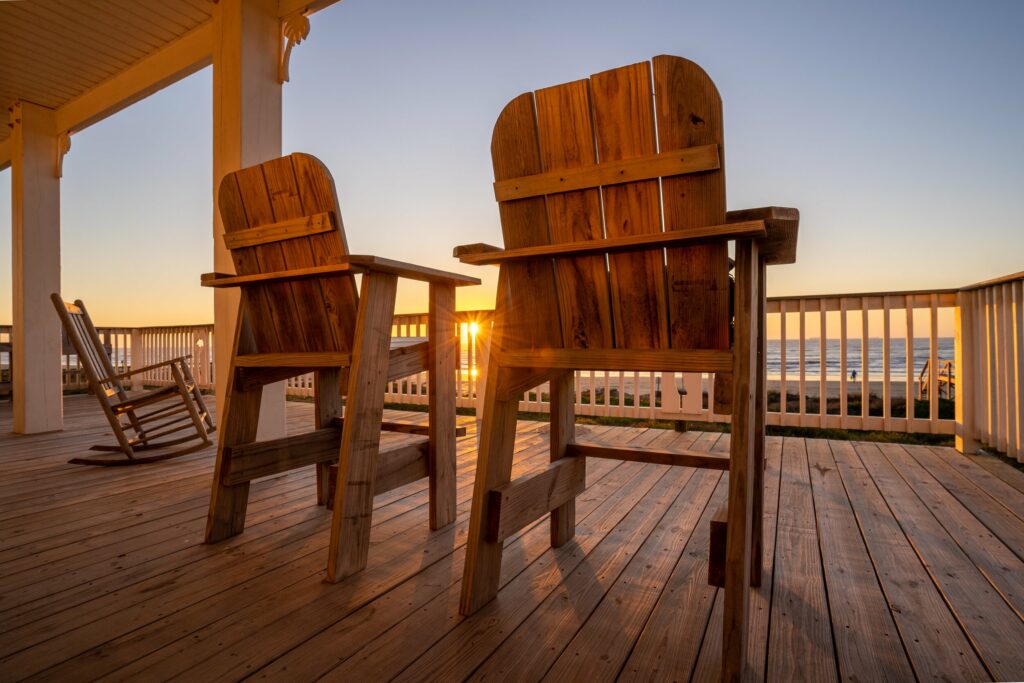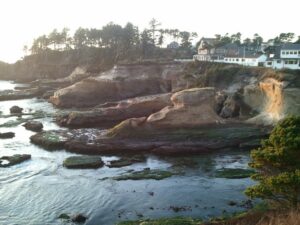By Polly Peterson
What should you consider when investing in a vacation rental along the Oregon coast? A three-part series where we look at tips for finding and creating your perfect vacation rental: location, home design, and staging and decor.
Part I: Location:
- Oceanfront or Ocean view?
- In a city, a neighborhood, or along the Pacific Coast Hwy?
- Unimproved land or existing home?
Brent Peterson, Managing Partner of Oceanfront Properties Inc., has been buying and selling real estate at the coast since Big Blue was built in 2009. Brent and his family started renting vacation homes at the coast for a few years when he and his buddy, Byron, decided they wanted to build and rent their own. As is always the case, finding land is the hardest part. While that is still true today, it is even more complicated than it was 11 years ago.
At that time, the vacation rental industry was in its infancy. Vrbo was pronounced V.R.B.O. and Airbnb was just a year old. You could build or buy a home and turn it into a rental as soon as you found a cleaner. But not now. Some cities and counties do not allow Short Term Rentals (STR), others have created regulations limiting the number of homes and their location. So, it is vital that you know the zones, know the land use regulations, and verify that the property is, or can be, approved for STR. Don’t trust the real estate agent, the land or home owner, or even your own perceptions if a home (or a piece of land) can be a vacation rental. Even if the home is one now, there is no guarantee the license is transferable. Do your homework. Call the city or county planning department and ask if you can run a STR on the property and the steps to get licensed.
Oceanfront or Oceanview?
The number one thing to look for if you are considering a piece of land or a home is — how is the beach access? Renters want to walk out their back door and onto the beach. So, get as close to the sand as you can. Brent’s rule of thumb is being able to reach the sand by foot, without crossing the highway, is best. If you can’t do that, the next best thing is to have an unobstructed view, higher up, so you take in as much of the ocean and the coast as possible.
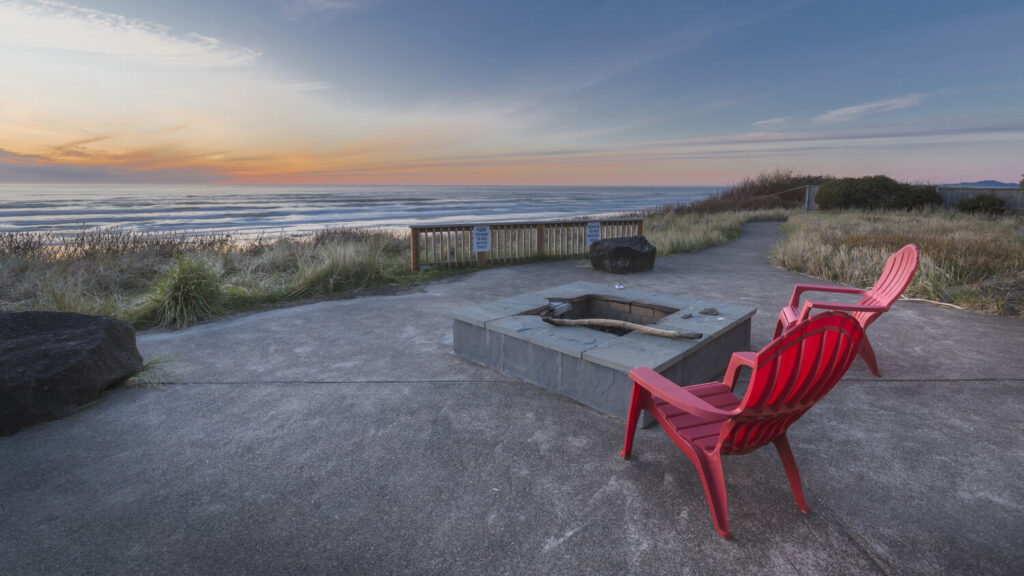
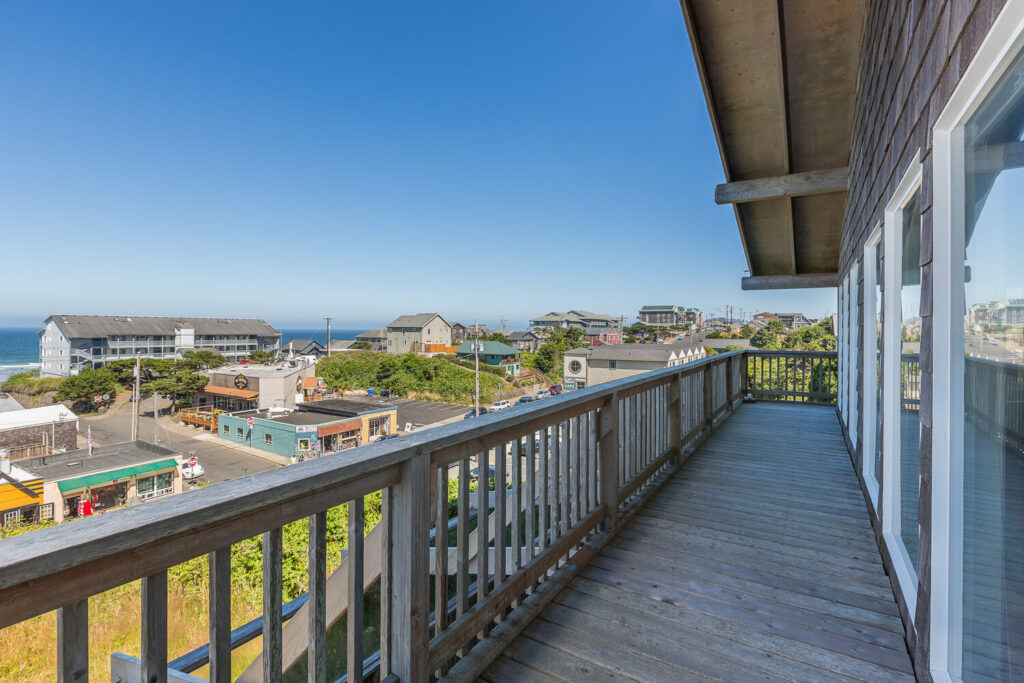
Examples of oceanfront (The Rock) along Hwy 101, and ocean view (Overlook) in a neighborhood in Nye Beach.
Buying land: in a neighborhood or along the Pacific Coast Hwy?
You might think that vacant lot means endless possibilities, but that is not always the case. Even if you find the perfect piece of land, right on the beach, do your research. The first question Brent asks when looking at a new piece of land is why hasn’t it sold yet? Why isn’t there a home on it yet? Building at the coast can be tricky, especially in the unincorporated areas, because of the requirements for the septic system. Not all land, especially property right on the beach, will pass the tests necessary for septic system installation. Especially now, in a really hot market, be wary of land that has been for sale for a while. It doesn’t necessarily mean it will be impossible to build on, but it can be complicated. Set-backs and environmental considerations might limit the size of the septic system you can put in and therefore the size of the home you can build.
The scenic Pacific Coast Hwy runs right along the shore-line. Delightful for a sunset drive, but poses one major difficulty for purchasing land right-on-the-beach. Most lots are sandwiched between the highway and the ocean. This might surprise you as you start to look and think, “Do I want to be right on the road?” But then you will notice, if you want beach-front, that may be one of the concessions you have to make. Thoughtful home design and sound-proof windows can all but eliminate highway noise.
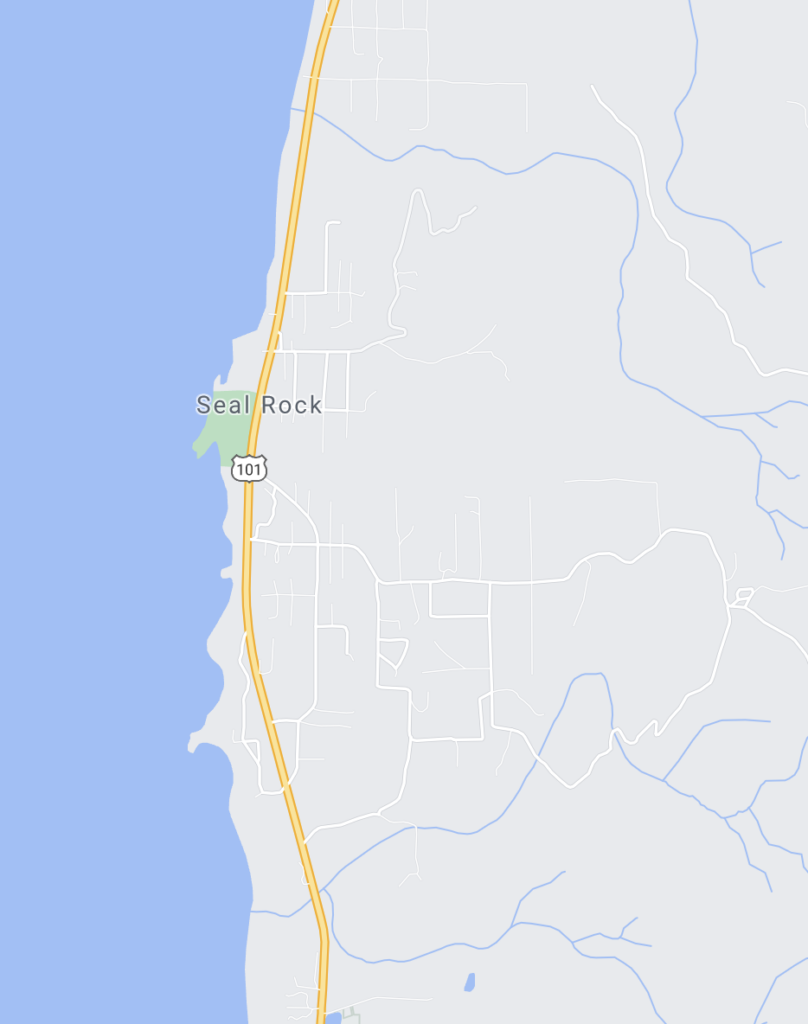
Neighborhoods and city lots are nice, because they are off the Highway, but often will come with their own set of rules and regulations. Also, you have to be more mindful of how your vacation rental will impact the people who live in the neighborhood year-round. Most communities now require your contact information to be posted where neighbors can see it and have set up complaint hotlines. Your home gets too many complaints, you might lose your license.
As with all real estate considerations, the proverbial “location, location, location” is true for property on the coast. Do your research before you fall in love with a piece of land. Know the codes and ordinances that regulate Short Term Rentals in an area you are considering. Be realistic about what it means to build on the coast. The materials used to build inland will not stand-up to the ocean spray and strong wind and rain storms at the coast.
Thinking about buying an existing home?
Another real estate proverb: buy as much house as you can, is also true for buying vacation homes. Right now, in Lincoln County, vacation rental occupancy is capped at 16 people, total, and no events, no weddings — it can’t be a venue. So, if your home — or the home you are looking at — can comfortably sleep 16 in conventional beds (not convertible couches or futons) then you are at the top of the market. Consider adding bunks or daybeds to larger rooms with queen-or-king sized beds, bumping up the occupancy. But do note that occupancy is often based on bathrooms, not beds, so check with your local authorities before you spend any money increasing how many your home can sleep.
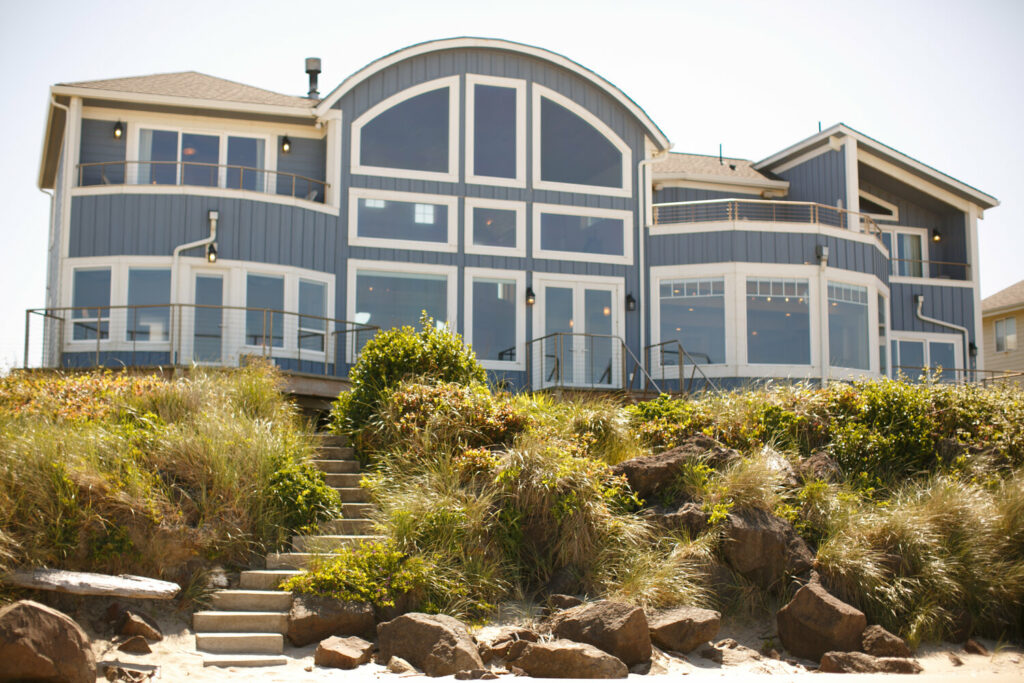
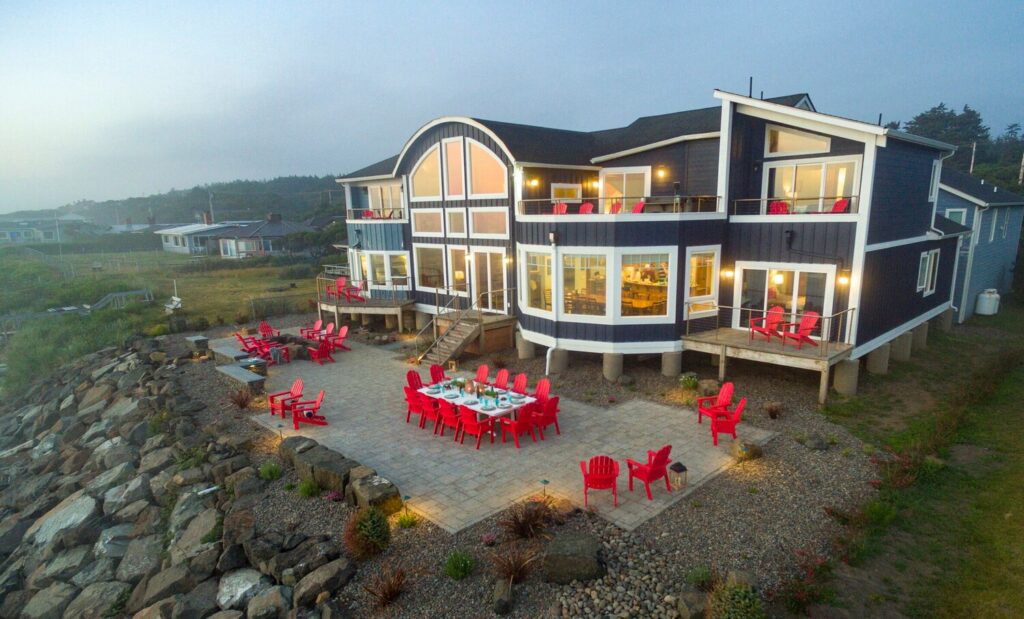
Big Blue is a great example of a large house with great bones that has been spruced up over the years!
Keep your mind on location — don’t let remodeling turn you away from an otherwise stellar home. With targeted and economical updates, you can turn a ho-hum house into a guest-pleasing vacation home with fresh paint, updated furniture and appliances, and solid-surface flooring. Don’t let tired decor discourage you from buying a home with an ideal location. Working with the right designers can transform the home. Of course, some homes — especially ones with a mish-mash of bad remodels — cannot be redeemed on a budget.
Look for the next installment: Home Design
